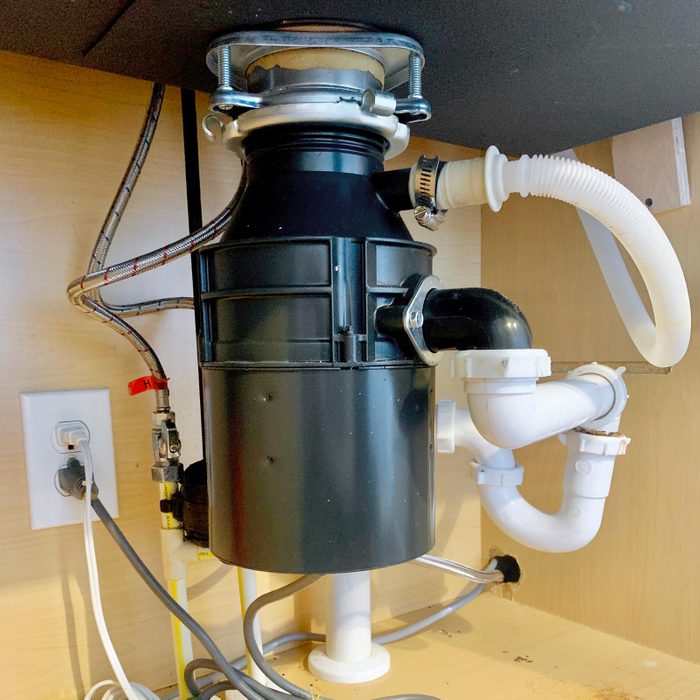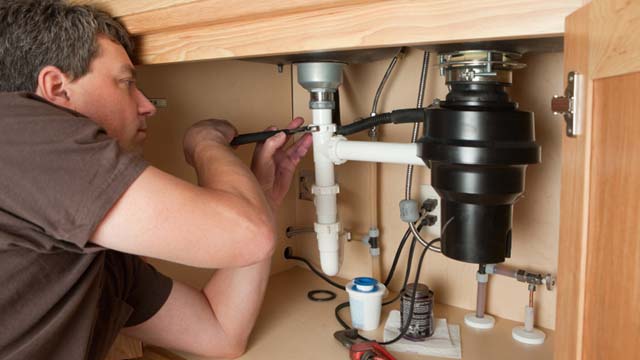Helpful Methods for Fixing a Dripping Garbage Disposal
Helpful Methods for Fixing a Dripping Garbage Disposal
Blog Article
They are making a number of great pointers about Tips on Fixing a Leaking Garbage Disposal as a whole in this content on the next paragraphs.

Garbage disposals are necessary kitchen appliances that assist in dealing with food waste successfully. Nevertheless, a leaking garbage disposal can be an aggravating and messy issue to manage. Luckily, numerous leaks can be taken care of easily with a couple of basic steps. In this post, we will certainly talk about exactly how to take care of a dripping garbage disposal properly.
Introduction
Waste disposal unit are installed under kitchen sinks and are developed to shred food waste into smaller items, enabling it to pass through the pipes system conveniently. While these tools are normally dependable, leaks can occur gradually because of damage, loose links, or damage to the system.
Usual Root Causes Of Leaks in Garbage Disposals
Worn Seals and Gaskets
Seals and gaskets play an essential duty in preventing water from leaking out of the garbage disposal. In time, these elements can weaken, causing leaks around the disposal system.
Loose Connections
The connections in between the waste disposal unit and the pipes system can end up being loose over time, creating water to leakage out during procedure.
Cracks or Openings in the Disposal Unit
Physical damage to the garbage disposal, such as fractures or openings in the real estate, can additionally result in leakages.
Determining the Source of the Leakage
Before attempting to repair a dripping garbage disposal, it is vital to determine the source of the leakage. This can usually be done through aesthetic evaluation or by carrying out straightforward tests.
Visual Evaluation
Examine the waste disposal unit device meticulously for any signs of water leakage. Pay very close attention to areas around seals, gaskets, and connection factors.
Examining for Leaks
One way to evaluate for leakages is by running water with the disposal system and looking for any type of visible indicators of leakage.
Devices and Products Needed for Dealing With a Leaking Garbage Disposal
Before starting the fixing procedure, gather the necessary tools and materials, consisting of a screwdriver, adjustable wrench, plumbing technician's putty, replacement seals or gaskets, and epoxy or patching product for repairing cracks or openings.
Step-by-Step Guide to Repairing a Dripping Garbage Disposal
Switch off the Power
Before attempting any type of repairs, make sure that the power to the garbage disposal device is turned off to avoid the threat of electric shock.
Find the Leakage
Identify the precise place of the leakage and determine the reason.
Tighten up Connections
Use a wrench to tighten any kind of loosened links in between the disposal unit and the plumbing system.
Change Seals or Gaskets
If the leakage is due to used seals or gaskets, eliminate the old components and change them with brand-new ones.
Patching Fractures or Openings
For splits or holes in the disposal device, use epoxy or an appropriate patching product to seal the broken area.
Testing the Garbage Disposal After Repair
When the repair is total, examine the garbage disposal by running water through it to guarantee that the leakage has been fixed.
Preventive Upkeep Tips to Prevent Future Leakages
To stop future leaks, it is important to execute routine upkeep on your waste disposal unit. This includes keeping it clean, preventing putting non-food products or difficult things down the disposal, and occasionally looking for leakages or various other concerns.
Final thought
To conclude, taking care of a dripping waste disposal unit is a fairly uncomplicated procedure that can be completed with standard devices and materials. By complying with the steps described in this article and practicing precautionary maintenance, you can maintain your waste disposal unit in good working condition and avoid costly repair work in the future.
What to Do About a Leaking Garbage Disposal
A leaking garbage disposal often goes unnoticed until you confront a sopping cabinet, a foul-smelling puddle, or an audible drip-drip-drip from the unit. The fix can be frustrating, too, because the leak can stem from a number of components in the system. Fortunately, with a little sleuthing, you can zero in on the leak and—depending on the exact location—stop the icky oozing and repair the component that caused it. Worst case scenario, if it turns out that the garbage disposal must be replaced, installing a new one is a reasonable do-it-yourself task for those with basic plumbing skills. Read on to keep the cash you’d otherwise hand over to a pro.
Prepare to find the leak
Prior to testing the garbage disposal for leaks, unplug it at the wall outlet and turn off the power from the breaker box to prevent electrical shock. Then insert a watertight sink stopper into your sink drain and wipe the unit dry with a clean cloth. In any handy container, mix a few drops of food coloring into a few cups of water, and pour the dyed water onto the sink stopper to help you locate the leak.
Investigate the source
the top, where the disposal meets the sink drain the side, where the dishwasher hose or main drain pipe connects to the disposal or the bottom of the unit Inspect each of these locations while gliding a light-colored rag over the unit; the dyed water will readily show on the rag and reveal the location of the leak. If a leak isn’t immediately apparent, remove the sink stopper and pour a few more cups of dyed water down the sink drain, then check for leaks again. Leaks near the top of the unit are more likely to show themselves while the sink is plugged, while side and bottom leaks are more noticeable while the sink is unplugged.
The metal sink flange that sits directly inside the sink drain is typically sealed around the top with plumber’s putty (a clay-like sealant) and then secured from under the sink with bolts. If the plumber’s putty deteriorates, or the bolts loosen, the flange can no longer form a watertight seal between the sink drain and the disposal—which could cause a leak at the top of the unit.
To reseal the leaky flange, you must first detach the garbage disposal. Start by loosening the screws securing the main drain pipe to the disposal, then loosen the screws in the metal clamp securing the dishwasher hose to the disposal and detach the drain pipe and dishwasher hose from the disposal. Loosen the screws in the mounting ring that connects the disposal to the metal mounting assembly beneath the sink, then pull down the disposal and carefully set it on a clean, dry surface. Loosen the bolts in the mounting assembly with a wrench, then pull down the mounting assembly and set it near the disposal.

I am very enthusiastic about Why Is My Garbage Disposal Leaking From the Bottom? and I'm hoping you enjoyed my blog posting. Do you know about someone else who is very much interested in the subject? Be sure share it. I am grateful for your time. Please visit our website back soon.
Book A Free Estimate Report this page